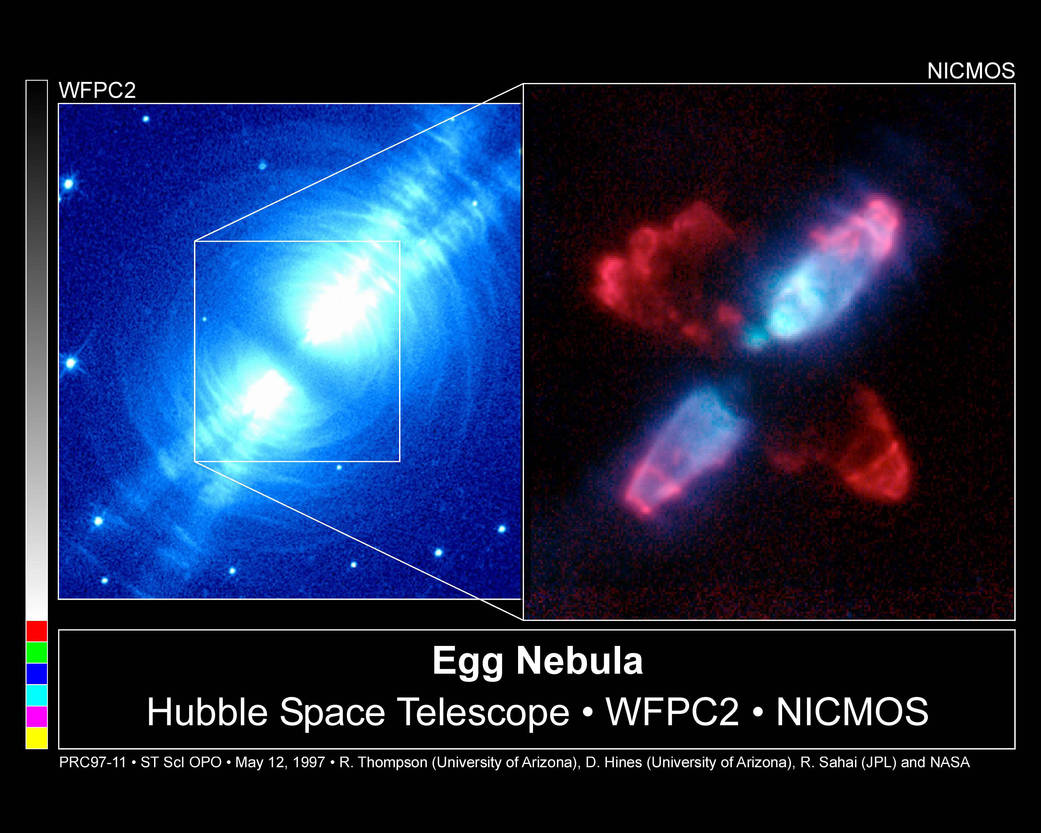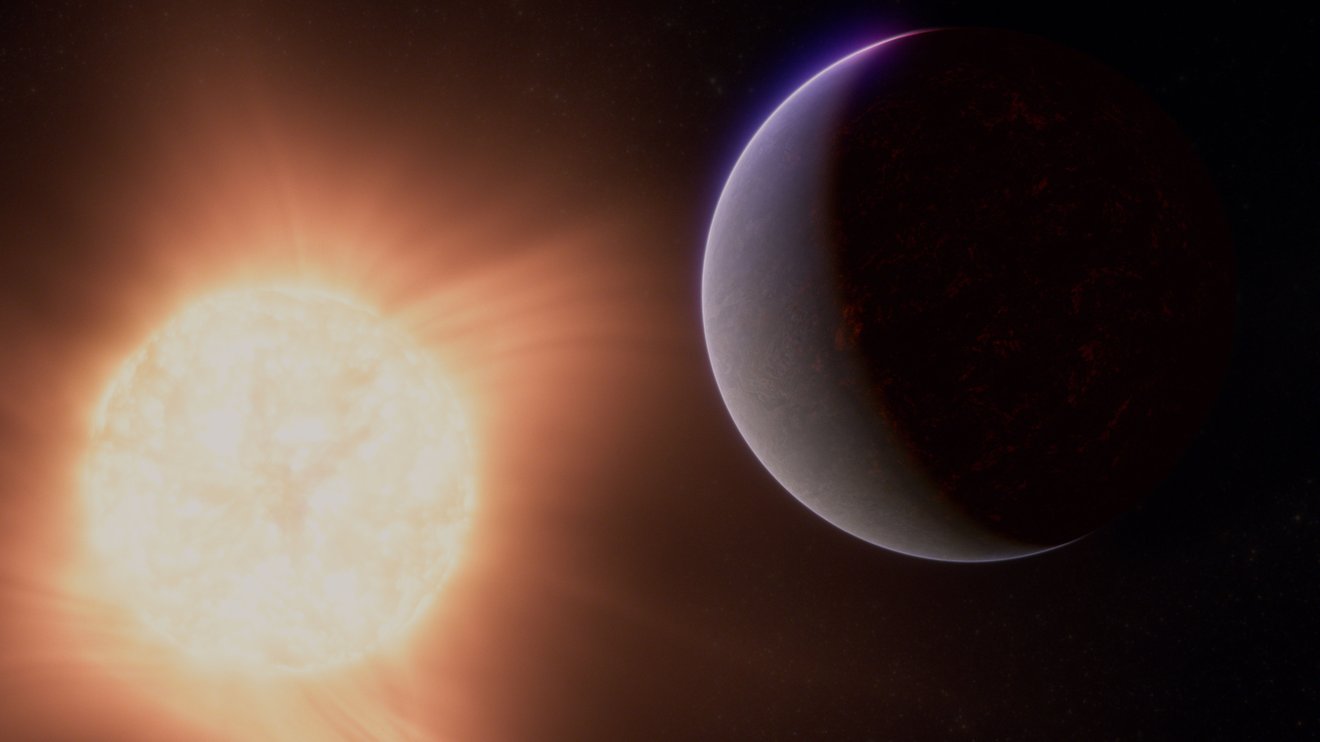
The Egg Nebula is taking a beating. Like a baby chick pecking its way out of an egg, the star in the center of the nebula is casting away shells of gas and dust as it slowly transforms itself into a white dwarf star in this image taken by the Near Infrared Camera and Multi-Object Spectrometer aboard the Hubble Space Telescope.
A thick torus of dust surrounds the star through which the shell gas is escaping. Newly expelled gas shells escape in beams as can be seen in the original image (top) and in the false-color infrared image shown (bottom). The infrared image is coded in false color to highlight two different types of emission. The red light represents hot hydrogen gas heated by the collisions of expanding shells. The blue light represents light from the central star scattered by the dust in the nebula. It takes light about 3,000 years to reach us from the Egg Nebula, which is hundreds of times the size of our solar system.Image credit: NASA, R. Thompson (U. Arizona) et al.




























